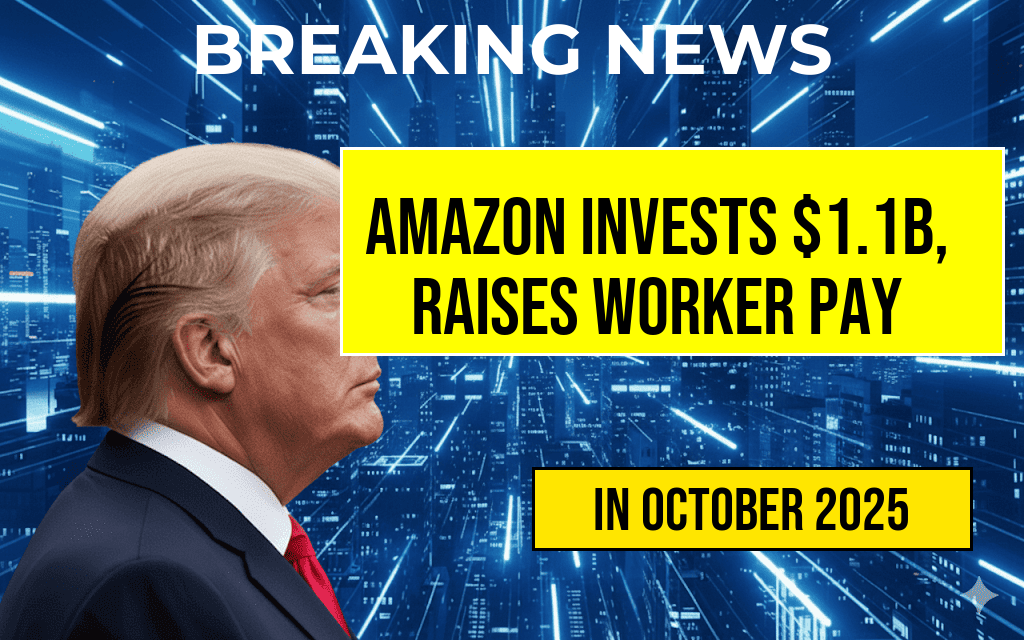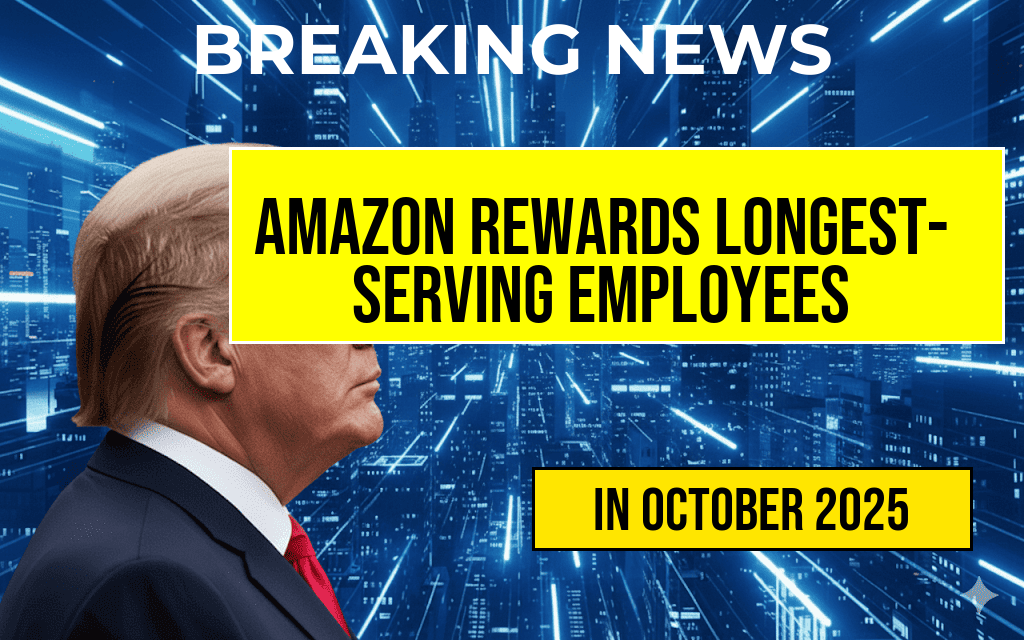Amazon announced a significant investment of $1.1 billion aimed at enhancing its fulfillment operations across the United States. This substantial financial commitment is expected to directly impact thousands of workers, elevating the average pay for fulfillment employees to over $23 per hour. The move marks a strategic effort by the e-commerce giant to address labor shortages, improve employee retention, and bolster its competitive edge amid a turbulent retail landscape. The investment will be distributed over the coming months, with Amazon planning to expand its warehouse workforce and upgrade existing facilities nationwide.
Strategic Investment to Elevate Workforce Compensation
Details of the Funding Allocation
- The $1.1 billion will be allocated toward wage increases, facility upgrades, and new hiring initiatives.
- Part of the funds will support raising hourly wages, with the goal of making fulfillment center jobs more attractive amidst a tight labor market.
- Amazon aims to bring the average hourly wage for fulfillment workers above $23, a significant jump from previous averages reported in early 2023.
Impact on Fulfillment Workers
Labor analysts estimate that this investment could benefit over 500,000 fulfillment employees across the country. The wage hike is expected to improve job satisfaction and reduce turnover rates, which have been notably high in recent quarters. Amazon’s move to boost wages aligns with broader industry trends, as companies grapple with attracting and retaining skilled workers amid a competitive job market.
Broader Context: Amazon’s Workforce and Industry Trends
Amazon’s Workforce Strategy
Amazon has been actively refining its employment practices over the past year. Following a period of rapid expansion during the COVID-19 pandemic, the company faced scrutiny over working conditions and pay. Recent efforts have centered on improving employee well-being and compensation, including offering sign-on bonuses, better benefits, and now, wage increases supported by substantial capital investments.
Competitive Landscape
Major retailers and logistics companies are escalating their wage offerings to secure talent. For instance, Walmart announced a minimum wage increase to $14 per hour in early 2023, while FedEx and UPS have also announced wage hikes to address labor shortages. Amazon’s sizable investment positions it as a key player in this ongoing industry effort to improve working conditions and personnel stability.
Details of the Investment and Future Outlook
Facility Upgrades and Hiring Goals
| Category | Allocation | Description |
|---|---|---|
| Wage Increases | $600 million | Supporting higher pay rates for fulfillment staff nationwide |
| Facility Improvements | $300 million | Upgrading logistics infrastructure and automation technology |
| New Hires | $200 million | Expanding workforce in existing and new fulfillment centers |
| Training & Benefits | $100 million | Developing employee training programs and enhancing benefits |
Job Market Impact and Employee Benefits
With the wage bump, Amazon anticipates increased job stability and satisfaction among fulfillment workers, potentially setting a new standard within the logistics sector. The company also plans to implement additional benefits, including improved health coverage and career advancement opportunities, further strengthening its employment proposition.
Industry and Economic Implications
Labor Market Dynamics
The move reflects broader economic shifts, as companies contend with a persistent labor shortage following the COVID-19 pandemic. The U.S. Bureau of Labor Statistics reports that warehouse and transport employment continues to grow, but firms are increasingly relying on financial incentives to attract and retain staff. Amazon’s sizable pledge underscores its commitment to maintaining a competitive workforce amid these pressures.
Potential Ripple Effects
Other industry players may follow suit, potentially leading to a wave of wage increases across the retail and logistics sectors. This could influence pricing, customer service levels, and overall industry standards for warehouse employment.
Expert Perspectives
Labor economists suggest that Amazon’s investment could serve as a catalyst for broader wage improvements within the e-commerce and logistics industries. Dr. Laura Miller, a workforce analyst at the University of Michigan, notes that such investments are crucial in a tight labor market, where worker retention directly impacts operational efficiency.
Looking Ahead
As Amazon implements these changes, observers will monitor its effects on employee morale, operational costs, and customer satisfaction. The company’s ability to balance wage increases with operational efficiency may influence its competitive strategies moving forward, especially as it continues to expand its fulfillment network globally.
For further insights into Amazon’s workforce strategies and industry trends, resources like Forbes (https://www.forbes.com) provide ongoing coverage of corporate labor practices and economic impacts.
Frequently Asked Questions
What is the total amount Amazon has invested to improve fulfillment workers’ pay?
Amazon has invested a total of 1.1 billion dollars to enhance the compensation of its fulfillment workers.
How has Amazon’s investment impacted the average pay of fulfillment workers?
The investment has increased the average pay for fulfillment workers to over twenty-three dollars per hour.
Why did Amazon decide to boost fulfillment workers’ pay with this investment?
Amazon’s investment aims to attract and retain skilled fulfillment workers, improve working conditions, and strengthen its position in a competitive labor market.
Does the pay increase apply to all Amazon fulfillment centers?
While the article highlights an overall average pay increase, the specific application across all fulfillment centers may vary depending on location and other factors.
Are there any other benefits accompanying this pay increase for Amazon fulfillment workers?
In addition to the pay raise, Amazon continues to offer benefits such as healthcare, stock options, and other incentives to support its fulfillment workforce.









